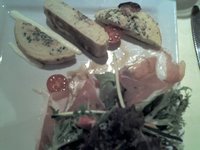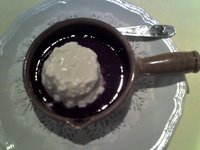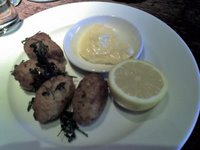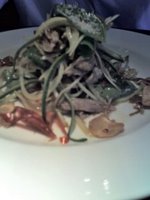Three Times (2005)
Qi Shu, Chang Chen, Dir: Hou Hsiao-HsienMy excuse for not doing any studying for Mandarin class this summer is to watch movies in Chinese. There aren't many opportunities to see films from Taiwan on general release, so after deciding that the prospect of seeing an open-air screening of Terry Gilliam's
Brazil at Somerset House in the potentially pouring rain wasn't that appealing, we decided to check this one out instead (it didn't rain, by the way...).
Three Times is a collection of three love stories set in Taiwan at different time periods. Or perhaps they're best described as three stories about love, since none of them are love stories, at least not in any conventional sense. In the first segment, set in 1966, a young military recruit whiles away his free time in a pool hall, where he develops a boyish infatuation with May. Cowardice or shyness prevents this becoming anything more than longing looks and smiles, until Chen has to leave for military camp. May moves on, and Chen spends his time off from the camp looking for her in all the pool halls in Taiwan, until he finally tracks her down. The segment ends touchingly with May and Chen eating noodles at a street stall, still sharing nothing more than a look, before waiting for the bus that will take Chen back to the military base.
The second story, set in 1911 during the republican movement, is the most unusual. It's shot with no dialogue, which is instead presented in inter-titles, with a rather bizarre piano soundtrack. The story follows the acquaintance between an aspiring republican and a courtesan and the relationship that will never happen. She has hopes of one day being released by her madam to become a concubine, while he, given his aspirations and political views, could never accept one.
The final segment is set in 2005. A young photographer becomes involved with a troubled singer who suffers from epilepsy. Hou captures all the emotional chaos of modern youth - rebellion, self-determination, casual relationships, sexual confusion, reliance on electronic communication, the struggle for space and identity - amidst the physical chaos of urbanization, traffic, pollution and neon lights.
The first third of the film is by far the best. Sumptuously shot in vivid, saturated colours, patiently filmed and full of quiet satisfaction, you'd think watching people play pool badly was the most interesting thing in the world. It's a subtle film, full of context, things that aren't said and things that aren't done. But it's a long and depressing film. Worse, it feels long and depressing. Two-thirds too long. The second segment in particular is painfully slow to watch and the silent film look isn't entirely convincing. It's no Wong Kar-wai movie, either in sentiment or aesthetic quality. For your 2h15m investiment, you don't get the satisfaction you'd get from
In The Mood For Love or
2046.










